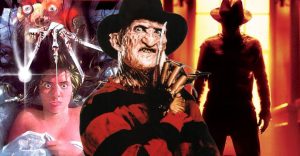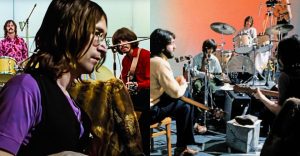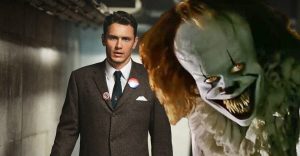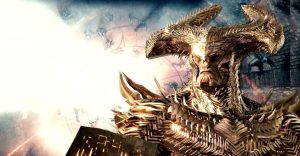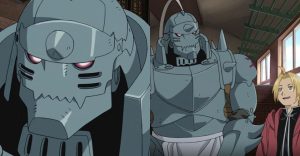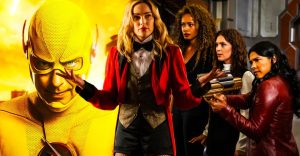15 Things You Never Knew About The Dragon Balls
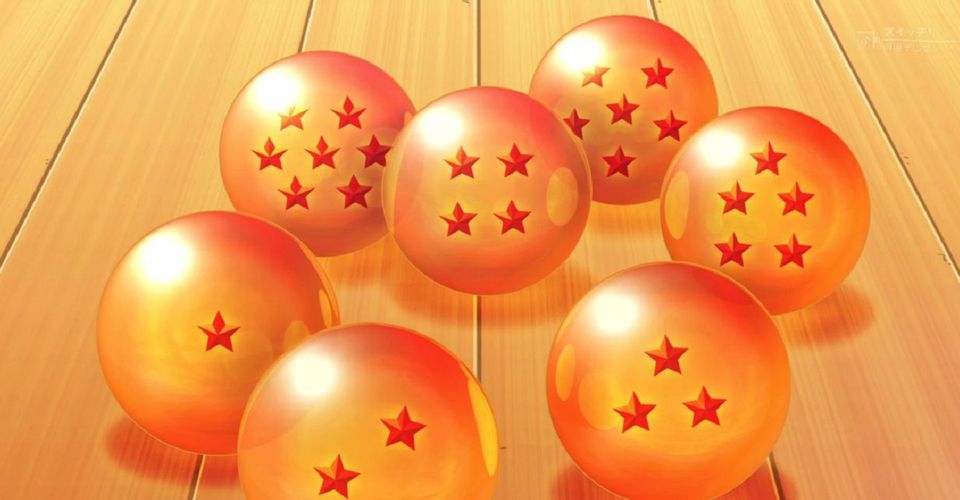
The Dragon Balls are some of the most potent artifacts in all of fiction. When assembled, they summon the Eternal Dragon — a total badass, by the way — and he grants the wish of the first person that speaks. In Dragon Ball and its sequel series, both heroes and villains alike aggressively hunt the titular wish granting orbs. And why not? They can do pretty much anything. Bring back billions of people from the dead? No problem. Alter the memories of everyone on Earth? Absolutely. Summon the underwear of a young, attractive woman? Uh, sure. Kind of creepy, but you’re the boss, tiny pig person. No matter how insane the wish, the Dragon Balls always manage to come through.
But how much do we know about the Balls, really? A huge part of the series revolves around Goku and his friends protecting them from the forces of evil or using them to undo destruction, yet most fans know tantalizingly little about the Dragon Balls. Where do they come from? Why are there exactly seven of them? How do they even work?
The answers to these questions lie in filler episodes of Dragon Ball, Dragon Ball Z, and Dragon Ball Super (which, because its filler, most people were paying 30% attention to max), so we’re going to save you some valuable time. The following is a break-down of the enigmatic yet insanely powerful orange spheres of wish-magic. Enjoy 15 Things You Never Knew About The Dragon Balls!
15 Influenced By An Edo-era Novel

Akira Toriyama, creator of the Dragon Ball series, is no stranger to homage. Indeed, the entire show (and the manga that inspired it) is based loosely on the popular 16th-century Chinese novel Journey to the West. While the inspiration here is fairly transparent (protagonist with a monkey tail, sense of adventure, the vaguely Chinese aesthetic, etc.), most Western readers will be surprised to learn that Toriyama actually avoided similarity to another Asian property.
There are exactly seven Dragon Balls because the author was worried that if there were eight, too many people would think he was ripping off Nanso Satomi Hakkenden (roughly translated as The Eight Dog Chronicles), a 19th-century Japanese novel by Kyokutei Bakin. The story, adapted into a manga and anime series in the mid-2000s, features eight samurai half-brothers, each in possession of a bead that represented a core value of Confucianism. Toriyama didn’t want his magic orbs to be conflated with Bakin’s. Honestly, it was a good call on his part. There were a ton of experts in esoteric Edo-era Japanese fiction watching Toonami at 3 am.
14 They Are Indestructible (Sometimes)

The Dragon Balls have two forms. When they are active (i.e. ready to grant wishes), they look like the orange, crystalline spheres with which we are all familiar. After the Eternal Dragon is summoned and grants its final wish, the Balls turn into stone for a year. You know, kind of like taking a long nap after finishing a difficult project (like, say, eating a whole pizza).
Colonel Silver, a member of the Red Ribbon army Goku fights early in the series, destroys a fake Dragon Ball and comments that the real ones are indestructible. Later on in the anime during the Fusion Saga, however, Piccolo warns Gotenks during his fight with Super Buu that if he breaks one of the Dragon Balls, they can never be used again. Now, during the battle between Gotenks and Buu, the Balls were turned to stone. The implication here is that the Dragon Balls cannot be destroyed when they are active, but they’re pretty much regular rocks the rest of the time. Either way, they would still probably hurt like hell if you threw them at someone’s head.
13 Their Guardian Can Speed Up Restoration

You know how we just said that the Dragon Balls take a year to recuperate after a wish? Well, that’s apparently more of a guideline than a rule. See, as we’ll go into later, the Guardian of the Dragon Balls has a ton of leeway in deciding how they operate. Traditionally a Namekian in the series, the Guardian is basically the steward of the Balls that dictates the scope of their power. For example, during the original Dragon Ball series, King Piccolo wished for his youth to be restored in order to conquer the world. Several days later, he was defeated by Goku, but many innocent people died in the struggle.
Kami, the Guardian of Earth’s Dragon Balls, decided to “make an exception” and allowed for another wish to be granted (the resurrection of King Piccolo’s victims) instead of waiting the usual year. So the “wait a year for another wish” thing is kind of like limiting yourself to one piece of cake at an office birthday party. Sure that’s usually the case, but, you know, stuff happens.
12 They Exist As An Extension Of Their Guardian

So the Dragon Balls are crazy powerful objects subject to the whims of their caretaker. How tied together are these two, exactly? Well, during Dragon Ball Z, it’s revealed in Future Trunks’ alternate timeline that the creator/guardian of a set of Dragon Balls must be alive in order for them to function. When he or she dies, the Balls turn to stone for all eternity, basically only useful as a fancy set of paperweights.
This creates an interesting dilemma in which the creator of a given set of Dragon Balls (sometimes a relatively frail individual) must be protected by the Z Fighters to ensure they can keep their supply of sweet, sweet wish magic flowing. While they may have other, more pressing matters to attend to, the life of the Guardian is paramount. The lives of the Balls are also tied to a model of the Eternal Dragon they summon, but we’ll get to that later.
11 It Doesn’t Take Long To Make Them

Off the top of your head, how long would it take to create something that can grant most wishes? 10 years? A hundred? A thousand? According to Dende, the current Guardian of Earth’s Dragon Balls, it takes about 100 days to make a set of Dragon Balls from scratch. If you have a set of Balls in their rock form, it takes even less time. That’s objectively pretty nuts.
In our world, it takes on average 7 months (around 210 days) to build a single-family house. And houses don’t bring your loved ones back from the dead. To be fair, we don’t know how difficult it is to create the Dragon Balls. A lot of complex craft may go into it. But still, if you can create something that cosmically powerful in less than half the time it takes for a human to build a few walls and a roof, that’s insanely impressive.
10 Only “Supposed” To Be Used Every 100 Years

After the Dragon Balls are used, they shoot into the sky and scatter across the globe. While they “only” take one year to rejuvenate, it was originally intended for this diaspora to make it impossible for anyone to consistently assemble them. See, when the Dragon Balls are used, they produce a large amount of beneficial wish-granting energy. To balance this out, they also generate an equal amount of negative energy.
According to the Old Kai in Dragon Ball Z, the Balls themselves store this negative energy in order to prevent it from creating any problems in the Universe. It takes about 100 years for the dark energy from one wish to disperse naturally. Of course, this all went to hell when Bulma invented her Dragon Radar and our heroes were able to just collect the balls whenever they wanted and consistently make wishes. The consequences of this negative energy build-up are explored thoroughly in Dragon Ball GT. But, we’re not going to talk about that series today, because we’re sticking only to the properties Toriyama himself had a hand in. Also, GT kind of sucked.
9 The Dragon Balls Can Kill (Some) People

Unlike the wussy Genie from the Aladdin series, the Eternal Dragon has no rules against killing people. Okay, well he doesn’t have rules strictly speaking, but he does have stipulations. Basically, the Dragon cannot kill an enemy who exceeds its creators power. Now, most fans of the series have interpreted that as a general ban on magic-wish-killing in general (because how boring would it be if that was how they defeated the villains), but that is not technically the case.
It’s entirely possible that, given the Eternal Dragon’s ability to resurrect large portions of the population, it could conceivably murder that many people. In the case of early villains like Emporer Pilaf, Goku probably could have taken him out with a few simple words! We can only imagine the kind of evil the Super Dragon Balls could eliminate. But more on those later.
8 The Eternal Dragon Uses Judgement And Discretion

The Eternal Dragon summoned by the Dragon Balls is perhaps more enigmatic than the Balls themselves. Said to live in the center of the Earth when not summoned, Shenron is depicted as alternatively full of rage or compassion. For example, he has been known to threaten uncouth supplicants — such as with Frieza’s underling Sorbet in the Resurrection F storyline — and use his discretion to make sure people get the best wish possible.
Unlike most beings that deal with wishes, Shenron never uses technicalities to punish the person making the wish. When King Piccolo asks for his youth to be restored, the Eternal Dragon doesn’t turn him into a toddler or a Namekian zygote. He returns him to his prime, as the wish was intended. Shenron even allowed Bulma to change a wish in the Dragon Ball Z episode “Eternal Dragon Resurrected”. While Bulma initially wished only for her friends killed by Piccolo to be brought back to life, the Dragon allowed her to alter her request so that all of those killed in Piccolo’s rampage would be revived. Yet most of us still have trouble changing our order at a restaurant.
7 The Eternal Dragon Can Be Killed

Shenron, the Eternal Dragon, appears to be an incomparably powerful being. He towers above basically all of the characters in the Dragon Ball universe, and he can do things that no one else can. Bringing the dead back to life, repairing whole planets, even granting immortality to organic beings. Outside of the actual gods the Z Fighters encounter (and occasionally train with/try to beat up), Shenron seems to be one of the mightiest characters in the franchise.
This, however, is demonstrably not the case. King Piccolo murdered Shenron in Dragon Ball after the Dragon granted him his wish. Now, one could make the argument that Piccolo somehow had an advantage over Shenron, since he technically helped to create him, but that doesn’t seem to be the case. He doesn’t say any magic words or anything, he just straight up disintegrates the “Eternal” Dragon with an energy beam.
The really messed up part? King Piccolo is one of the weakest villains in the series, relatively speaking. Pretty much anyone from Frieza to Buu could probably take down Shenron with ease. Still, the antler-horned sky beast is undoubtedly one of the coolest looking characters in the series.
6 The Balls Cannot Restore All Life

While the Dragon Balls are very powerful, there are some known limits on the scope of their abilities. For example, most fans will probably recall that the Balls cannot revive anyone that passed due to natural causes, and that they can only bring people back to life once. Well, they’re supposed to only bring people back to life once. We’re looking at you, Krillin. But as long as you stay within these boundaries, you should be good to be resurrected!
Well, unless you were never technically alive to begin with. See, there’s a guy in Dragon Ball named Dr. Gero who likes to create sentient life and make it kill things. Sometimes he creates androids whole cloth, while other times he uses human beings as a base. Android 16 (completely artificial) and Android 17 (originally human) were both slaughtered by the villainous Cell. After the Z Fighters defeated him, they wished for everyone killed by Cell to be brought back to life (like they do). Android 17 was revived, but his fabricated brother was not. So, huh, apparently the Dragon Balls are kind of racist.
5 Dragon Balls Can Be “Passed On”

The Dragon Balls are tied very closely with the people that create them. The death of their Guardian (or of the Eternal Dragon, or the breaking of the model of the Eternal Dragon) causes them to become inert. You know, for being indestructible and all, these things are actually pretty finicky. The Namekian Dragon Balls, in contrast, seem to be more resilient. In addition to being basketball-sized, the Namekian Balls appear to have a system in place for Guardian fatalities.
When Grand Elder Guru — creator of the Namekian Dragon Balls — is about to die, he’s able to transfer his stewardship to his heir Moori before he passes. Since the Balls continued to work after this, it seems that their fate was tied to Grand Elder Moori from then on. While there may have been a prior ritual or something before Guru’s death that we didn’t see, it seems like he named Moori the new Elder by basically just telling him that was his job now. With that in mind, Dende should probably name Goku or Vegeta the new Guardian of the Dragon Balls. Those guys are way harder to kill.
4 The Rules On Wishes Depend On Their Creator

The Dragon Balls, and by extension the Eternal Dragon, grant wishes with stipulations. They cannot make anyone fall in love, for example, and only grant 1 to 3 wishes at a time. These limitations, however, are not derived from an ancient and binding cosmic law. They are completely fabricated by the will of the Balls’ creator. Throughout the series, it’s hammered home again and again that the power of a set of Dragon Balls is directly correlated to the power of the being that forged them.
The series’ definition of “power” in this case, oddly, seems to be completely arbitrary. Dragon Ball Z is pretty obsessed with numerical value being placed on the potency of a being’s strength. There’s a reason “Over 9,000!!!” became a meme. Yet there doesn’t seem to be any way to gauge someone’s spiritual or magical prowess. Dende’s Dragon Balls are much more powerful than Kami’s, yet Kami appears to be much more experienced and magically inclined. So maybe Kami just didn’t really care that much about the Dragon Balls? Like, maybe he got really intoBreaking Bad or something. You’ve got to have priorities.
3 The Dragon Balls Can Be “Upgraded”

Perhaps the most interesting and baffling thing about the Dragon Balls is their mutability. While they start the series with strict rules (you only get one wish, you can’t bring back people from the dead more than once, etc.), over time, their Guardians have enhanced their abilities. Dende, for example, recreated the Earth’s Dragon Balls to grant three wishes instead of one. Those wishes can even be saved for an indeterminate amount of time! It’s like a season pass to Disney Land or something.
Likewise, the Namekian Dragon Balls initially only allowed one person to be brought back from the dead at a time, but were later modified to allow for mass revivals. None of these changes are depicted as particularly taxing or difficult for the Guardians to preform, either. Honestly, it kind of makes you feel like the Namekians have never put any sort of critical thought or effort into their wish-magic. Or, maybe the writers just changed stuff around when it made the most sense for the story. It’s definitely one of those two things.
2 There Are Super Dragon Balls

In the new series Dragon Ball Super, we finally learn about the origins of the Dragon Balls. Called, imaginatively, the Super Dragon Balls, these progenitors were created in the Divine Year 41 by the Ryujin, Zalama. These Balls differ from the ones we’re used to in several key ways. First, they’re huge. Just mind-bogglingly big Balls. They are approximately 37,196 kilometers in diameter, which is about three times the size of planet Earth. Second, they summon the Dragon of the Gods, basically a Super Shenron who’s golden in color. Oh, he’s also massive. Like, much bigger than seven planet-sized-orbs-level of massive. Third, they can grant any wish. No limits, no caveats, you can just wish for whatever you want. Love, the death of any enemy, a lifetime supply of sandwiches, anything is possible with the Super Dragon Balls.
Now, these Dragon Balls are obviously much harder to get together. Since they are the size of planets, gathering them in a single location is much more of an ordeal. Additionally, when the one wish they grant is used, they scatter across two different realities: Universe 6 and Universe 7. So most people stumble across the Super Dragon Balls, rather than actively looking for them. Speaking of which…
1 The Namekians Stole The Dragon Balls

Throughout Dragon Ball Z, we are led to believe that the Dragon Balls were invented on the planet Namek by its indigenous population. Every creator and Guardian of the sets of Dragon Balls we see are Namekian, and only they seem to know how to manipulate them. This, of course, is proved to be utter poppycock in Dragon Ball Super.
The Namekians didn’t invent the Dragon Balls, as stated above, but they did run into the Super Dragon Balls in the vastness of space. They harvested pieces off of the magic orbs and made smaller, more manageable mystical orbs of their own. This explains so much about the lore of Dragon Balls. The Namekians didn’t limit their wishes because of some moral integrity; they just don’t know how the technology works! Dende and Moori are just slowly figuring out how to push the Dragon Balls closer to their original function. Right now, they’re basically like a couple of cavemen that found a smartphone but can only use it to check the weather.
—
Do you know something about the Dragon Balls that we don’t? Did we manage to stump you with some of these facts? Let us know in the comments!










